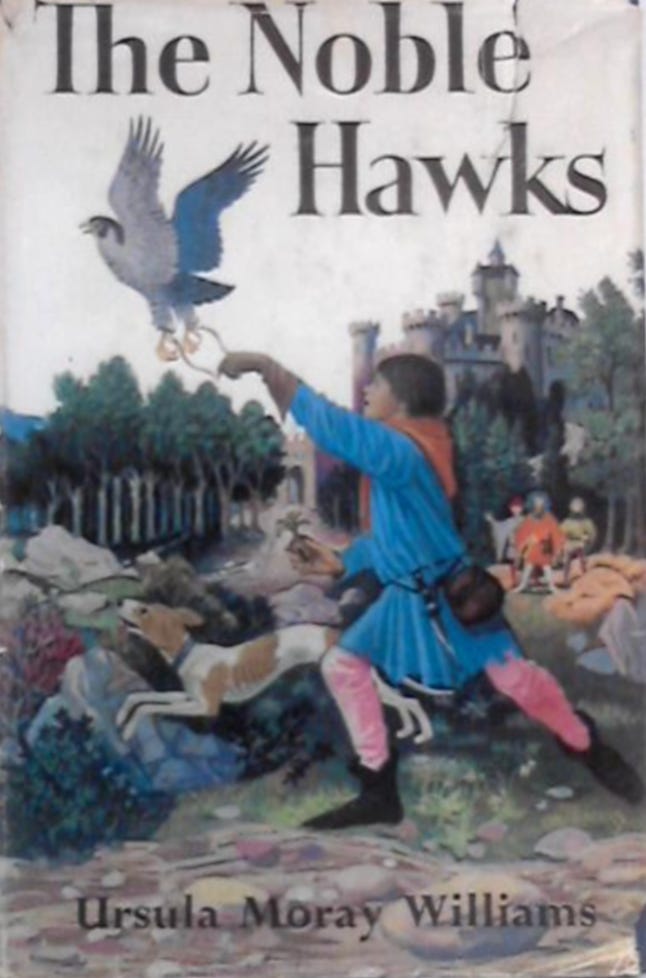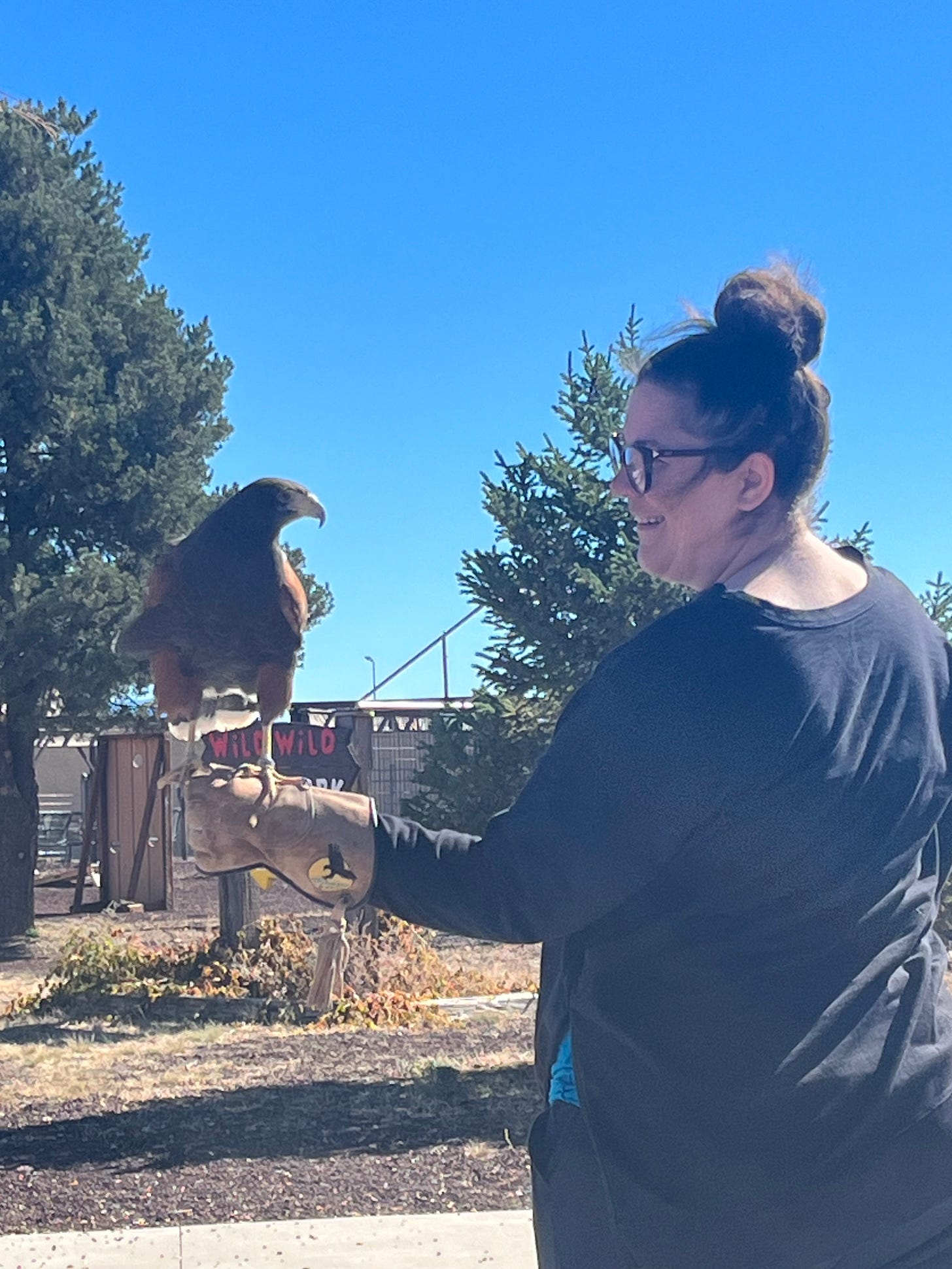The Earl's Falconer
by Ursula Moray Williams
Illustrated by Charles Geer
Originally published in 1959 in Great Britain under the title, The Noble Hawks.
First published in the USA in 1961.
Note from our team: We know it can be disappointing to discover an exciting book is out of print and hard to find. We share reviews of these books to help you recognize them at sales, determine their value, prioritize your collection, and discover new authors. If this book’s a winner, you may want to explore more by the same author!
Review:
My 13-year-old son and I recently enjoyed this historical fiction book set in medieval England. Dickon, the son of a free yeoman farmer, dreams of owning his own falcon someday or even becoming a falconer himself. When he finds a falcon trapped in a tree, he doesn't hesitate to rescue it. Though it has clearly escaped from his earl's castle, Dickon decides to keep the bird in his possession for a short time, intending to return it.
Unfortunately, Dickon is discovered with the bird and must appear before the earl for judgment. While stealing a bird of prey is an offense potentially punishable by death, the earl is merciful to the boy who clearly has a talent with birds.
After proving himself capable of taming a difficult goshawk, Dickon is invited to apprentice under the earl's master falconer at the castle. While working hard and rubbing shoulders with people of all ranks, he learns valuable life lessons and proves himself worthy of serving his earl.
I really enjoyed the vivid descriptions of falconry (using many terms of the art, which are helpfully described in a glossary at the back of the book), and the character growth of Dickon as he matures from being an impulsive boy to a hard-working young man.
No date is given for the setting of the book, and the exact dating feels a bit muddled. Dickon's grandfather is said to have died in an outbreak of the Black Death (usually dated 1346–1351), but at the same time, a character in the book is planning on leaving for Palestine to go on crusade (the primary campaigns of which took place from 1095–1291). Despite these potentially puzzling historical details, the book still feels like a good selection for anyone looking for a lesser-known historical fiction option covering the Middle Ages in England.
The woodcut-style illustrations by Charles Geer that open each chapter are very striking—they are a nice addition to the book.
Content considerations: None
Age suggestion: Elementary age and up (maybe age 10+ to read alone). Nearly all the characters in the book are male, so this may appeal most to boys!
Kirkus Review link.
Check local library availability via WorldCat.
Discover more of our favorite books!
Our Literary Catalogue
Welcome to the Reshelving Alexandria Community's Literary Catalogue! This is a collection of true, good, and beautiful books that we have curated through a lifetime of reading. This catalogue is comp…









